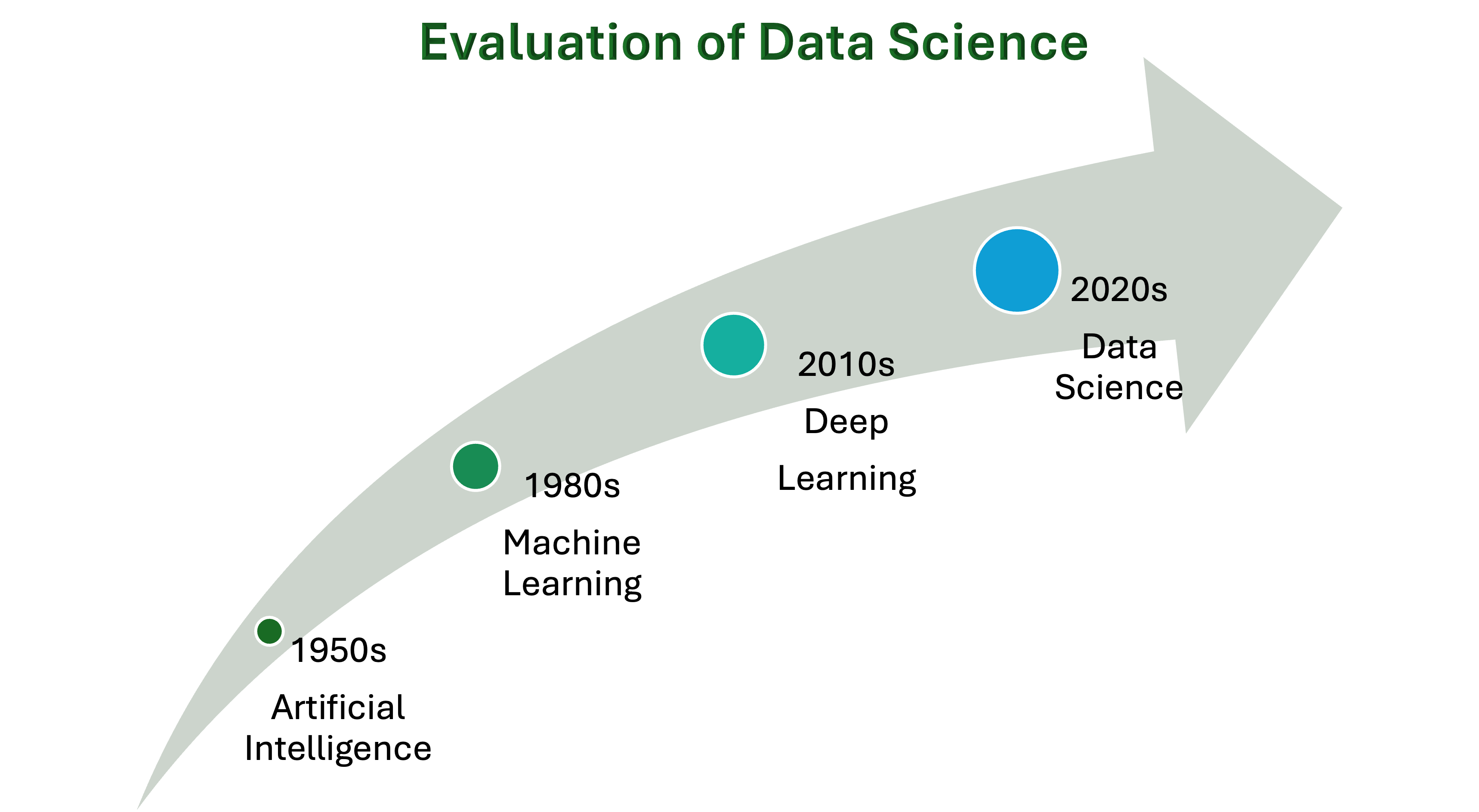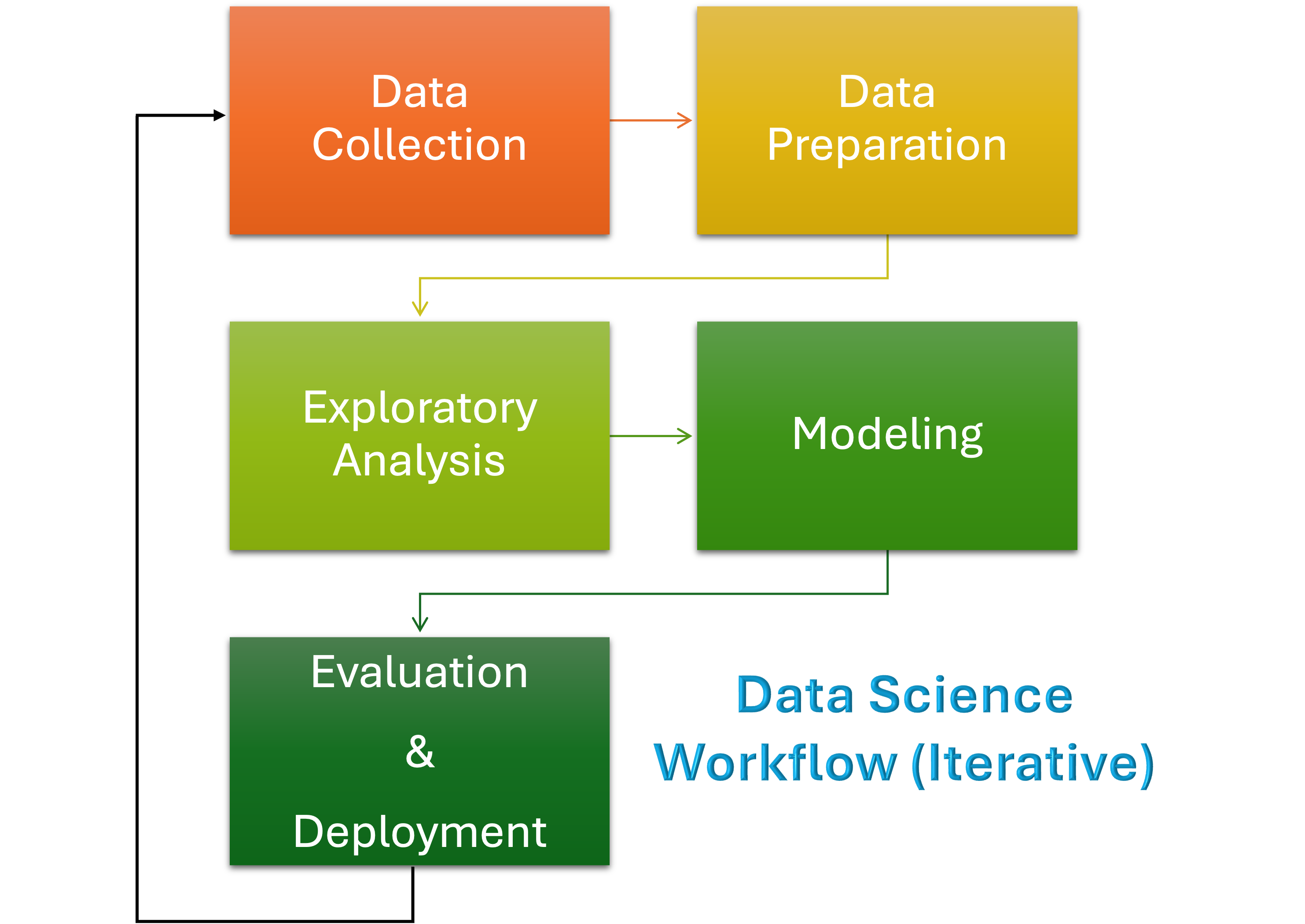📘 Chapter 1 — Introduction¶
Understanding the relationship among Artificial Intelligence (AI), Machine Learning (ML), and Data Science (DS) — their evolution, importance, and real-world impact.
1. Relation among AI, ML, and Data Science¶
Conceptual Overview¶
Artificial Intelligence (AI) is the broadest field, aiming to create systems capable of intelligent behavior.
Machine Learning (ML) is a subset of AI that focuses on algorithms that learn patterns from data.
Data Science (DS) integrates statistics, data analysis, and ML to extract insights and build predictive models.
The hierarchical relationship can be expressed as:
This relationship is visualized as follows:

Mathematical View¶
Data Science involves modeling real-world processes mathematically:
Where:
- \(X\) = Input features or observed data
- \(Y\) = Target variable or output
- \(f(X)\) = Learned function (model)
- \(\varepsilon\) = Random noise or error term
Example: Predicting house prices — \( Y = f(\text{area, rooms, location}) + \varepsilon \)
2. Evolution of Data Science¶
The discipline evolved through several key phases, blending statistics, computing, and AI:
| Era | Focus | Key Development |
|---|---|---|
| 1950s | Artificial Intelligence | Symbolic reasoning, rule-based systems |
| 1980s | Machine Learning | Statistical learning, neural networks |
| 2010s | Deep Learning | GPU-driven deep neural networks |
| 2020s | Data Science | Unified approach: data + ML + domain knowledge |
Timeline Visualization:

3. Importance of Data Science¶
Data Science lies at the intersection of mathematics, programming, and domain expertise.
It powers modern decision-making, enabling organizations to:
- Detect patterns in large-scale data
- Automate predictions and recommendations
- Optimize resources and operations
- Support data-driven policies and research
Data Science Workflow¶

Key Steps: 1. Data Collection — Gather raw structured and unstructured data
2. Data Preparation — Handle missing values, noise, and inconsistencies
3. Exploratory Analysis — Visualize and understand distributions
4. Modeling — Apply ML/statistical models to learn relationships
5. Evaluation & Deployment — Assess accuracy and deploy results
6. Iteration — Feedback loop for model improvement
4. Real-world Examples¶
| Domain | Application | Description |
|---|---|---|
| Healthcare | Disease Prediction | ML models identify risk factors for diseases |
| Finance | Fraud Detection | Anomaly detection on transaction data |
| Marketing | Recommendation Systems | Suggest personalized products using user data |
| IoT | Predictive Maintenance | Sensors predict equipment failures |
| Research | Climate Modeling | Data analysis for environmental forecasts |
Summary¶
- AI aims for intelligent behavior.
- ML enables systems to learn from data.
- Data Science applies these methods to extract actionable insights.
- Its iterative process ensures continuous improvement and generalization.